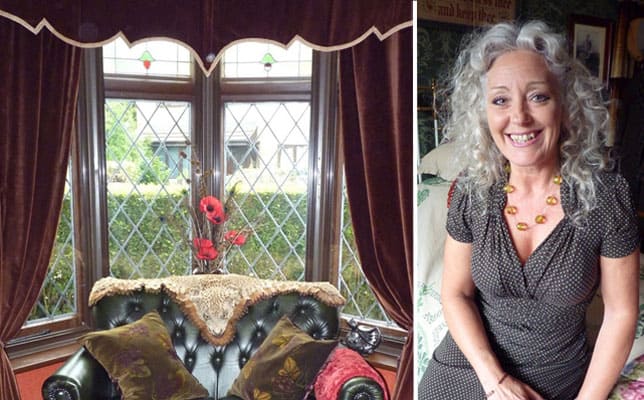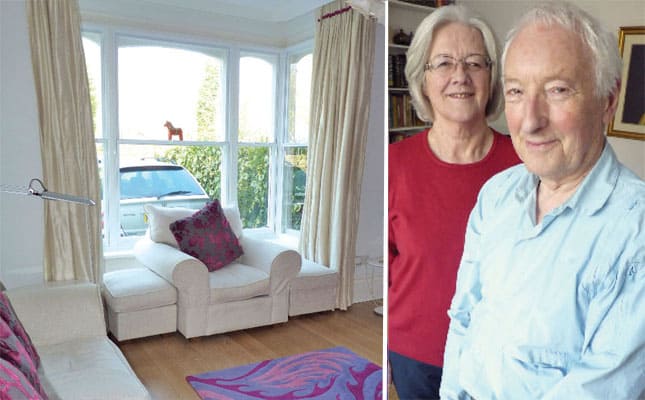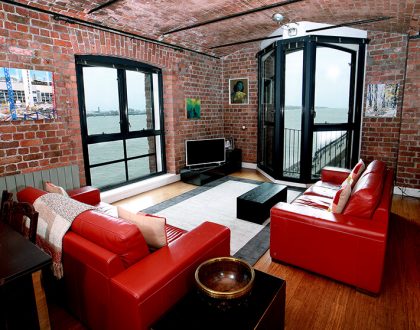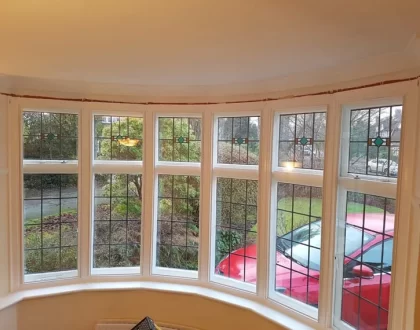Autumn – season of mists and mellow fruitfulness…and condensation?

Can secondary glazing tackle condensation?
The short answer is ‘yes’ – in most cases fitting secondary glazing eliminates condensation. Very occasionally secondary glazing can’t significantly reduce the problem, but we’ve have extensively researched the problem of condensation, and there’s advice here on how to combat it.
As the outside temperature falls, condensation problems inside the home can begin. Caused by moist, warm air settling on a cold surface, condensation is noticeable on the glass in your windows, but it can also settle on walls, wood or other materials, leaving behind black mould, wet surfaces and a musty odour.
Melanie and Glenn live in a traditional 1940s themed house. Melanie says: “We immediately noticed the benefits. Our dining room is much warmer and quieter. The most welcome change is that condensation no longer drips from the bay”.
Air contains moisture, and warmer air supports more moisture. A fall in air temperature below ‘dew point’ causes air to shed the moisture, depositing it as condensation. To illustrate when dew point occurs, imagine a hot bath. As it’s run, steam is given off; more than the air can support. Saturation, or dew point, occurs, and condensation in the form of droplets appear on mirrors and walls.
Each hour, as we breathe, we add 57ml of water to the atmosphere. The heavy condensation you may see on a bedroom window is the effect of vapour in human breath in a relatively cool room. Heating appliances, like paraffin stoves, contribute a staggering volume of 10 pints of water for every 8 pints of fuel used, and the consumption of 1 cubic foot of gas discharges 1 cubic foot of water into the atmosphere. Washing and drying laundry indoors and cooking also contribute.
John and Barbara had been mopping up condensation from their bay window every morning for years. Their property is in a conservation area. John says: “We love the bay’s original glass and didn’t want to change it. The lounge is much warmer since the secondary glazing was fitted and the condensation has stopped. We really like that the secondary glazing doesn’t detract from the look of the bay, inside or out.”
The condition of primary windows can be a contributory factor. Ill fitting, and they allow too much cold air to circulate between the glasses, frequently causing condensation to form. If glazing putty is in poor condition it lets rain seep underneath, getting drawn inside the windows by capillary action. This increases the humidity of the air within the cavity.
A construction fault may be contributing to condensation problems – if masonry is in poor condition, or the primary window has rotten frame sections.
Sometimes, condensation is attributed to fitting secondary glazing. However, building experts agree that’s seldom the cause, and secondary glazing cannot cause condensation where it didn’t previously exist.
If you’ve read this far, it will be clear that condensation is a complex problem. And although, in the majority of cases, installing secondary glazing eliminates or reduces it, there are occasional cases where it’s impossible to identify the source of excess humidity, or effect a cure.
Ideally, a building’s humidity, heating and ventilation should be balanced. The balance will vary seasonally, but a bit of time experimenting with finding the correct levels is often rewarded with a good measure of success.
4 steps to reducing humidity in your home
- Control the source of humidity. Vent gas burners, clothes dryers etc. to the outside. Fit extractor fans, particularly in kitchen or bathroom. Make sure you have adequate vents and air bricks throughout the house.
- Provide ventilation. Outside air is usually dryer, diluting the humidity of inside air. In older houses, this often occurs automatically because of constant infiltration of outside air through ill-fitting windows and doors.
- Heating. Provide dry heat to counterbalance most of the moisture produced by modern living.
- Air passage. Ensure existing air bricks are unobstructed.
5 ways of controlling condensation in your house
- Fit secondary glazing.
- Increase the running time of kitchen or other ventilation fans.
- Encourage moisture to escape by opening fireplace dampers or vents.
- Open doors and windows for a few minutes each day to air your house.
- Air kitchen, laundry and bathrooms during or just following use, closing any doors which allow steam to permeate the rest of the house.
Along with an expected reduction in condensation problem, secondary glazing has other benefits: thermal efficiency (so lower heating bills), acoustic insulation (less noise from outside in your home) and enhanced property security to name just 3! Visit our website, and see all the benefits of installing secondary glazing.
Recommended Posts
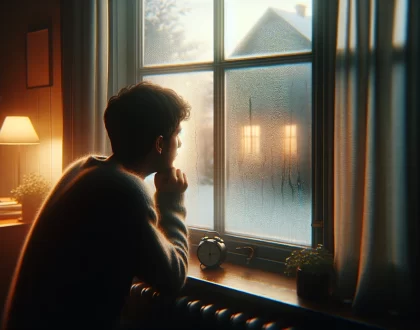
How can I stop condensation?
06/02/2024


